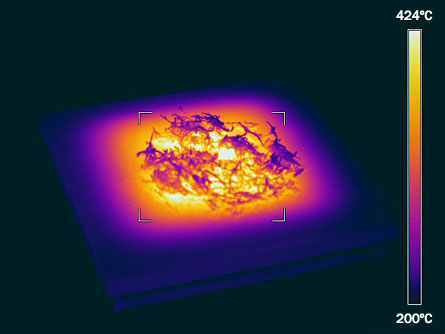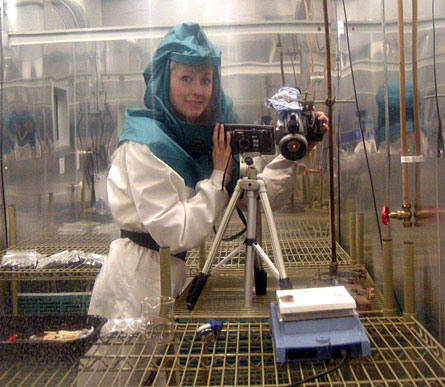Normal 0 false false false MicrosoftInternetExplorer4 Earth’s atmosphere during some past geological ages wasn’t as oxygen-deprived as previously thought, new experiments suggest.
Results of the new lab work — conducted in climate-controlled chambers large enough to walk inside — indicate that combustion of natural materials such as moss and wood takes place only when atmospheric concentrations of oxygen exceed 15 percent. Some previous experiments suggested that combustion could take place at oxygen levels as low as 12 percent, says Claire Belcher, a biogeochemist at University College Dublin in Ireland. Those tests, however, used unnaturally dry materials such as paper, or were performed in small cabinets where oxygen could have infiltrated, she and colleague Jennifer McElwain note in the Aug. 29 Science.


The concentration of oxygen in Earth’s atmosphere, which today sits just under 21 percent, has fluctuated significantly during the last 600 million years (SN: 12/17/05, p. 395). Although there’s no direct way to measure ancient oxygen levels, some geochemical data suggest that levels have risen to as high as 35 percent and dropped to as low as 10 or 12 percent for significant intervals. Often, says Belcher, values at the lower end of that range are inferred by the absence of charcoal from the fossil record: When the atmosphere is so oxygen-poor that fires can’t start or spread, sediments deposited during that time contain little, if any, naturally produced charcoal.
Belcher and McElwain conducted their experiments by heating various combustible materials on a hot plate in one of several 8.3-cubic-meter chambers permitting control of temperature, humidity and atmospheric chemistry. The researchers gathered data at oxygen levels between 9 percent and 21 percent for both a modern-day carbon dioxide concentration of 380 parts per million and a CO2 level of 1,500 ppm, which is representative of some ancient atmospheres, says Belcher. For some combinations of conditions, especially those simulating a low-oxygen atmosphere, the researchers wore space-suit–like gear. When oxygen levels drop below 13 percent, people typically have heart attacks and die, Belcher notes.
During their tests, the researchers used thermal-imaging sensors to detect the excess heat produced by materials during combustion. Matches and paper lit at oxygen concentrations as low as 13 percent but quickly burned out, says Belcher. For the natural materials the researchers tested, including pine wood and sphagnum moss, combustion didn’t occur at oxygen levels below 15 percent, and sustained, vigorous combustion didn’t proceed unless oxygen levels were 17 percent or higher.
While previous studies suggest that atmospheric concentrations of oxygen sat in the low teens during periods when charcoal was prevalent in the fossil record, the new findings indicate that those models are wrong, says Belcher.
Those models “are far from perfect … and the data contain large error bars,” says Tim Lenton, an environmental scientist at the University of East Anglia in Norwich, England. The new findings “should caution those who treat the output of such models as hard data,” he notes.
The new research also “highlights the need for much more experimental work about how fires start and spread,” says Andrew C. Scott, a fire ecologist at Royal Holloway, University of London in Egham, England. Scientists need to develop more tests using natural materials to answer the critical question of how low oxygen levels can get before fires don’t take hold, he adds.






